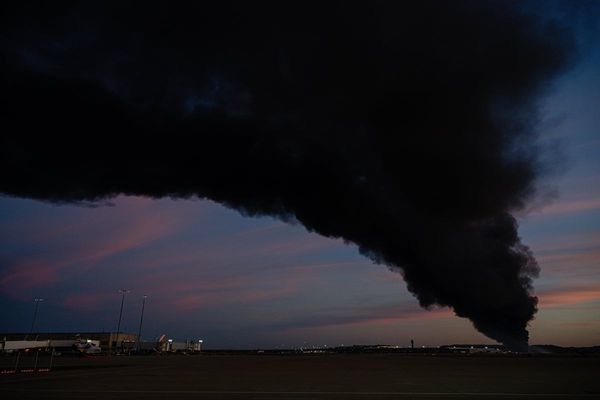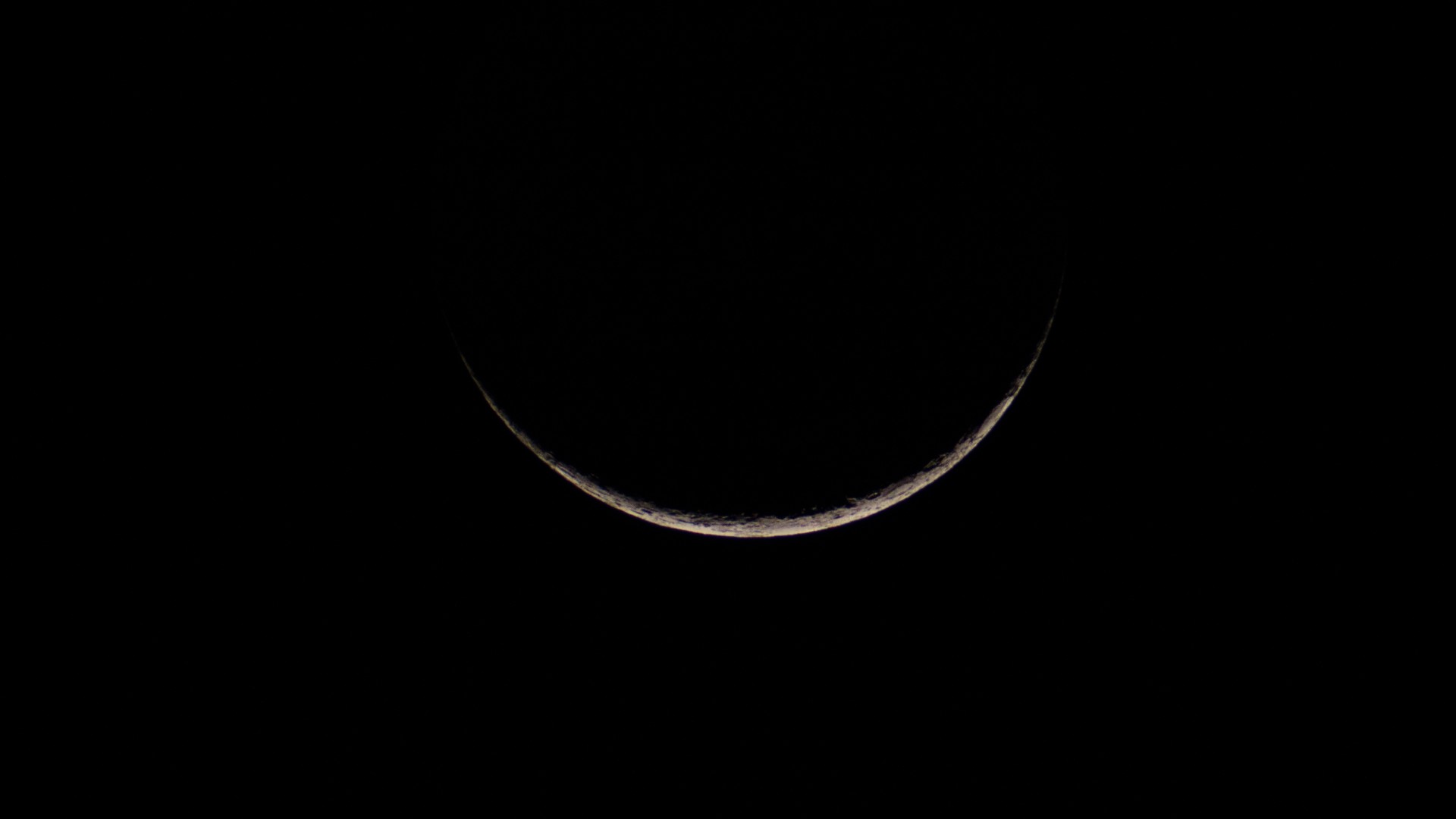
How soon after the new moon can you spot the thin crescent moon against the bright backdrop of a twilight sky?
Cases of unaided-eye sightings of the moon when it is younger than 24 hours are not very common, and sightings within 20 hours of a new phase are very rare. The best opportunities usually come in February, March and April, for at these times the lunar crescent stands directly above a sun that has just set.
And on Thursday evening, April 20, everyone across North America will have an opportunity to sight an exceedingly young crescent moon. A very challenging observation to be sure.
Related: Moon facts: Fun information about the Earth's moon
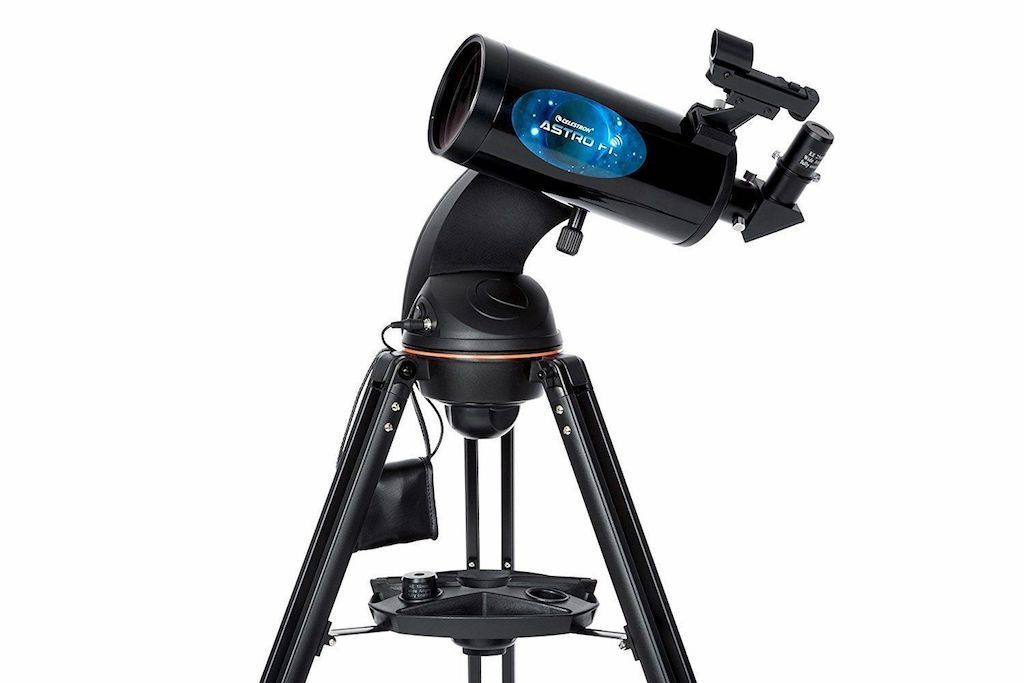
Looking for a telescope to help you find a sliver of crescent moon in the night sky? We recommend the Celestron Astro Fi 102 as the top pick in our best beginner's telescope guide.
April 20 might sound a bit familiar to you, since a hybrid solar eclipse is scheduled on that very same day. The eclipse will be seen as total from a very small part of Western Australia, as well as a part of Indonesia, where it will be midday on April 20. But halfway around the world. for North America, the new moon responsible for that eclipse on that date, will either be occurring shortly after midnight (12:12 a.m. Eastern time), or during the mid-evening hours (9:12 p.m. Pacific time) on April 19.
Typically, on the day of a new moon, our nearest neighbor in space rises about the same time as sunrise and sets at about sunset. Nonetheless, when evening comes to North America on Thursday, April 20, the moon will have moved far enough away from the sun to the east, to allow it to "possibly" be glimpsed very low in the west-northwest sky shortly after sunset.
At any age under 24 hours from new, the moon appears — to quote British astronomer, Guy Ottewell — "Breathtakingly thin and barely brighter than the low dense sky around it." Ottewell's "low dense sky" makes reference to the thicker air or haze that always seems to hug the horizon, sometimes up to an altitude of 5 or 6 degrees. Such haze can attenuate and redden the light of even a dazzlingly bright object as the sun.
Now imagine trying to see something as elusive as a thin sliver of moon, only 1% (or less) illuminated by the sun, fully immersed in this horizon haze and you can understand the degree of difficulty in trying to catch sight of such exceedingly thin crescent moons.
Calendrical opener
Calendars such as the Jewish and Muslim have lunar months beginning not with new moon in the astronomical sense but with the evening when the moon first appears. Indeed, to people who follow a lunar calendar, the first sighting of a delicately thin waxing lunar crescent is of everyday practical importance.
For many years, when I was answering inquiries from the general public for the New York Hayden Planetarium's question and answer line, I would occasionally field calls around the time of certain religious holidays (like Ramadan) asking, "What night might I see the moon being born?" Indeed, tracking the moon's phases was probably the basis for the earliest calendars. The first appearance of the crescent moon in the western sky was known to some as "The Knife of Time."
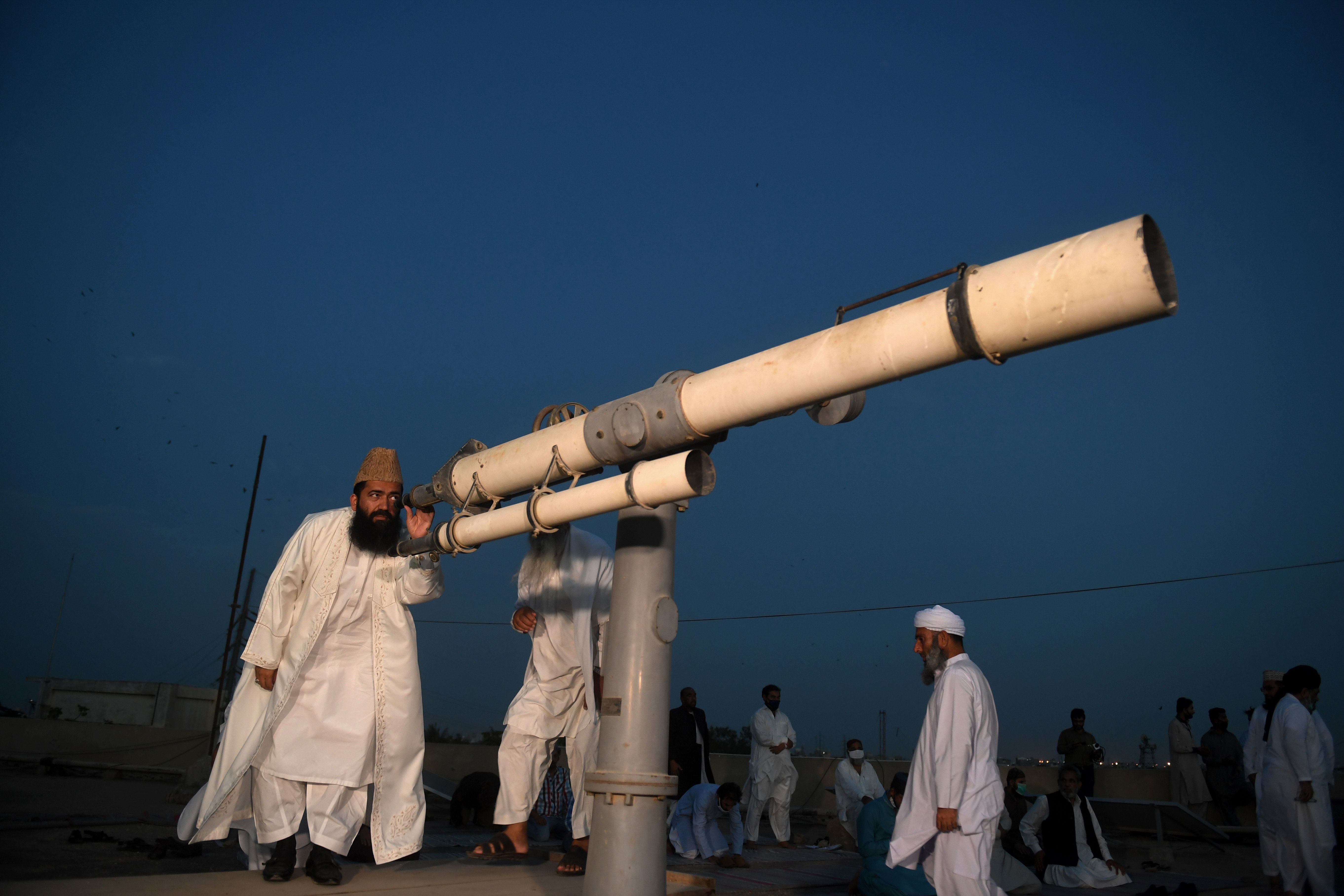
Problematic criteria
Surprisingly, however, even to this day, no one can say with absolute certainty when the very first sighting of the waxing crescent moon becomes possible. Historians have yearned to have some simple criterion for deciding whether or not a razor-thin crescent might have been sighted from say, ancient Babylon on a specific date.
Interestingly, the earliest records containing predictions of first visibility came from the Babylonians. The methodology for making such forecasts were further developed by Muslim and Indian astronomers, including Persian Omar Khayyam (1048-1131) who was well known for his contributions to mathematics and astronomy. Some based the first possible sighting of the lunar sliver on the difference in minutes between the setting of the sun and the moon, stating that if the moon will be visible if it sets at least 48 minutes after sunset. Still others cite that the moon will be visible if it is separated from the sun by a specific number of angular degrees.
Still another factor is the moon's distance from the Earth. When near perigee (that point in its orbit nearest to Earth) the lunar disk appears up to 14% larger in apparent size compared to apogee (when it's farthest from the Earth). In addition, the moon moves notably faster in its orbit at perigee compared to apogee, thus making a moon that appears somewhat bigger and shifts its place in the sky more rapidly a bit easier to perceive when so near to the sun.
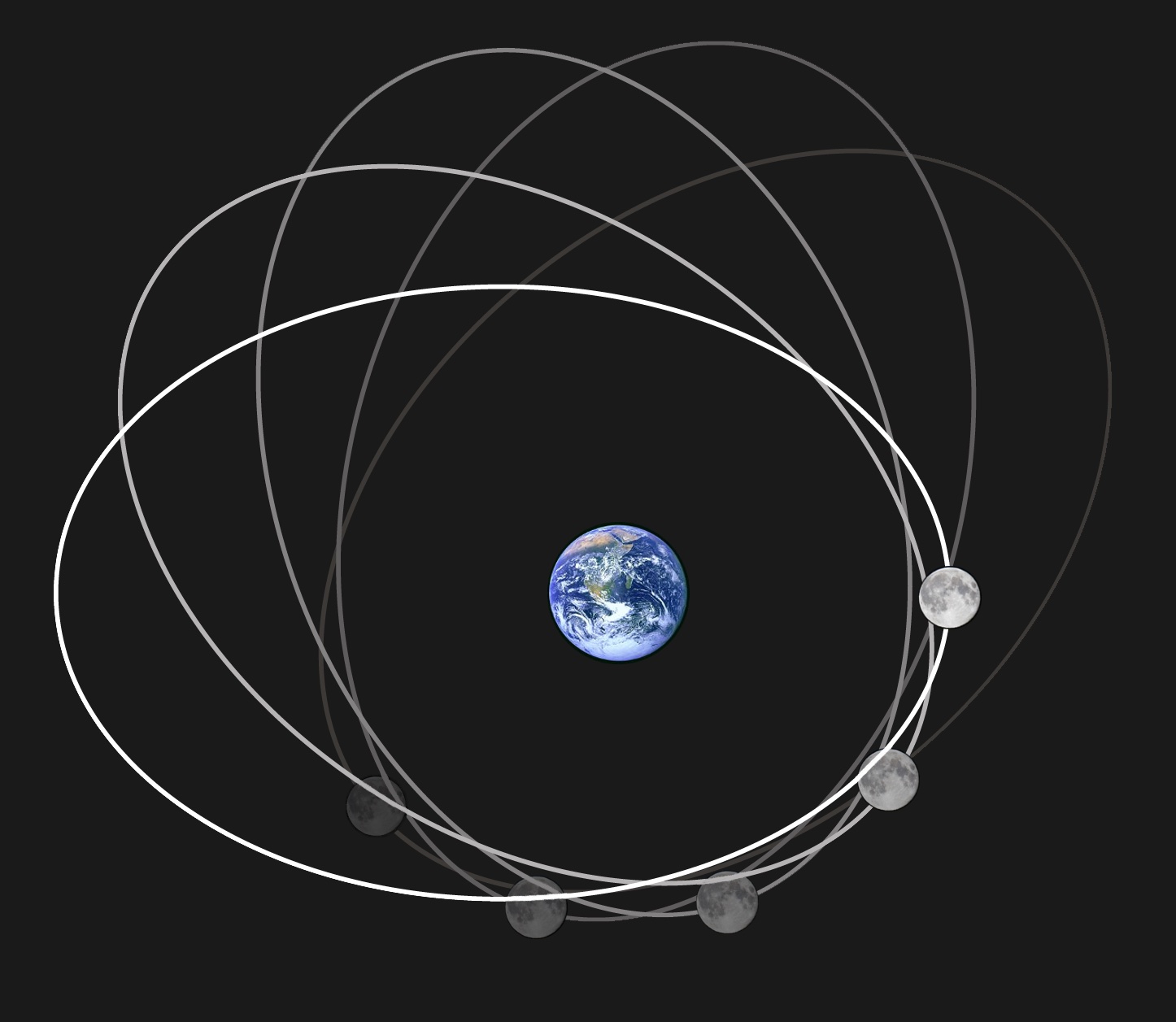
Moonwatch: April 20, 2023
So now, I am "throwing down the lunar gauntlet" and offering this observing challenge to one and all. At dusk on April 20, for those living in the Eastern time zone, the crescent moon will be just under 20 hours old and only 0.7% illuminated by sunlight. From the Central time zone it's a little less than 21 hours old and 0.8% lit, while along the Pacific coast, it's 23 hours and 1.1% lit.
In doing some research, I found a number of similar cases where observers were successful in picking out the filament of moon in the twilight sky, soon after sunset. Interestingly, 80% of these cases came during the month of April.
All you are going to join this lunar observing challenge need is a clear, flat horizon looking toward the west-northwest. This is critical, since the moon will be at its best when it is 7.5 degrees above the horizon. (Your clenched fist held at arm's length measures roughly 10 degrees in width.) By placing the bottom of your fist on the horizon, the top part of your fist measures about 10 degrees. So for this experiment, consider searching roughly three-quarters of a fist up from the horizon. Take particular note as to where exactly on the horizon the sun sets, for your attempt to make a sighting of the moon will be directly above this point on the horizon.
As to when you should look, try 20 to 25 minutes after sunset. During that timeframe, the moon will be approximately 7.5 degrees above the horizon, while the sun will be approximately 4.5 degrees below the horizon. This is during the time of civil twilight, the brightest of the three stages of twilight, when the sun is just below the horizon, so there is generally enough natural light to carry out most outdoor activities.
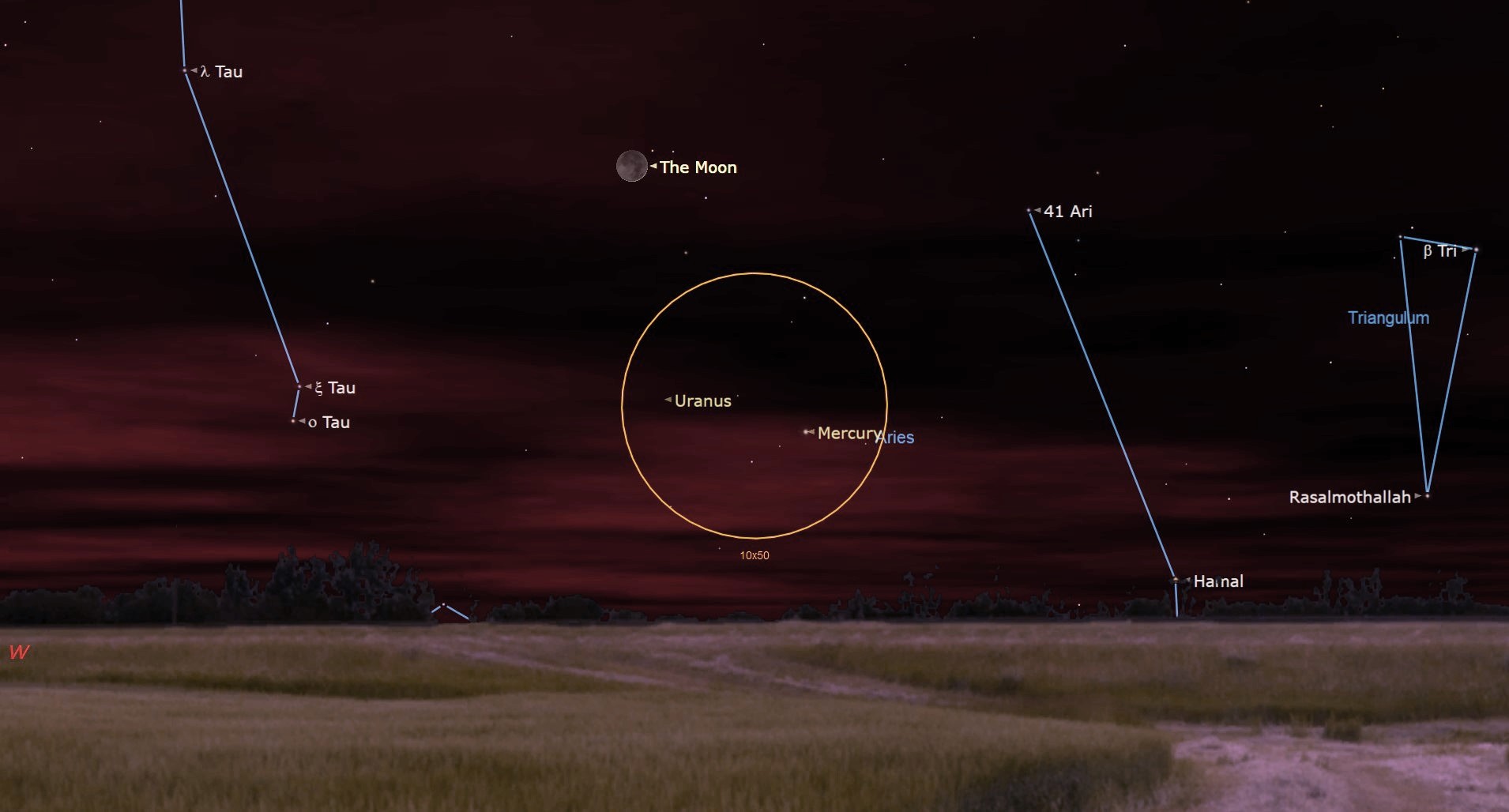
Binoculars vs. your unaided eyes
But with so bright a background sky, you'll definitely need binoculars to pick out the extremely thin sliver of moon. Just slowly scan the region of the sky where it is supposed to be. Local sky conditions will be very important; a hazy sky (where the sun appears as a reddish-orange ball as it sets) will almost certainly make the job difficult to nearly impossible. But if you have a clear, transparent sky (the sun still appears blindingly bright as it drops below the horizon), your chances will markedly improve.
However, to possibly contribute to knowledge of when the months of lunar calendars should begin, you should try to find the moon first with your unaided eye; use your binoculars only after that if there is really no hope if finding it with just your bare eyes.
If you don't have binoculars or a telescope to get a close look at the moon, take a look at our guides to the best telescopes and best binoculars. And if you're looking to snap some awesome lunar photography, check out our guide on how to photograph the moon, as well as our best cameras for astrophotography and best lenses for astrophotography.
Remember that the moon is not a smooth sphere, but has a rough surface. Since it will be less than 15 degrees from the sun, binoculars or a small telescope may show the bright arc as broken in a few places, with bright specks or points appearing where individual mountains are located.
This will certainly be a challenging and (if successful) exhilarating observation. If you do see it, I'd be interested in hearing all the details. Send me an email at: skywayinc@aol.com.
Good luck and clear skies!
Joe Rao serves as an instructor and guest lecturer at New York's Hayden Planetarium. He writes about astronomy for Natural History magazine, the Farmers' Almanac and other publications. Follow us on Twitter @Spacedotcom and on Facebook.




